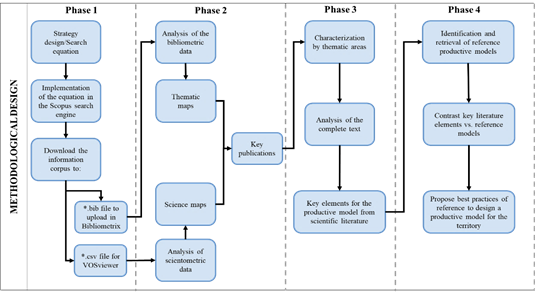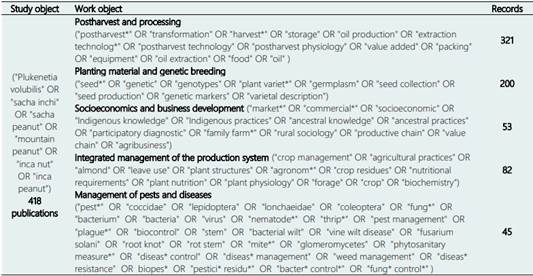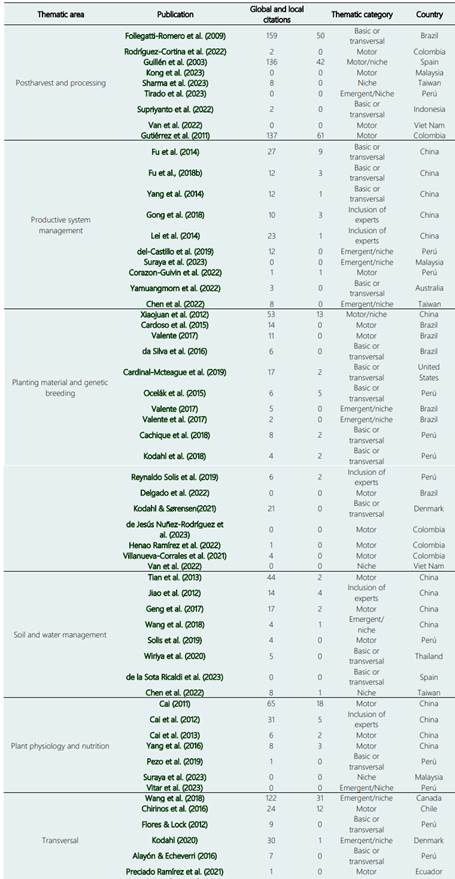1. Introduction
Sacha Inchi (Plukenetia volubilis L.) is a climbing plant or liana, discovered in 1753 in the Peruvian Amazon. The etymology of its common name derives from two Quechua words: 'Sacha,' which means wild, and 'Inchi,' a term that refers to the peanut produced by the plant. Its production in the wild and under cultivation occurs in Peru, Bolivia, and the Antilles and, to a lesser extent, in Suriname, Venezuela, Colombia, Ecuador, and Brazil (Alayón & Echeverri., 2016). Various common names are recognized, such as sacha yuchi, sacha yuchiqui, sacha inchik, bush peanut, wild peanut, and Inca peanut. Its cultivation can be conducted in areas with an altitude between 30 and 2000 meters above sea level in tropical or subtropical climate conditions, with temperatures between 10 °C and 26 °C and average relative humidity of 78% (Flores & Lock, 2012).
The development of its production system as a crop of economic and nutritional interest has spread to south-eastern Asian countries such as Bangladesh, China, South Korea, Malaysia, Taiwan, Thailand, and Vietnam (Wang et al., 2018) . This tendency has occurred mainly for the production of oil with a high content of essential omega fatty acids and as part of the dynamics of the vegetable protein market in the world characterized by incorporating this species into protein mixtures and its consumption as dried fruit (Mordor Intelligence, 2020b,2020a). As a production system, Sacha Inchi cultivation has focused on obtaining and processing its seed for direct consumption or as raw material to obtain flour and oil for direct consumption or use in culinary preparations (Céspedes, 2013; del-Castillo et al., 2019; Del Carmen & Lucia, 2018). In more recent research, the analysis of its properties and nutritional characteristics has focused on the content of phenolic compounds and antioxidants (Chirinos et al., 2016; Benitez et al., 2015; Soongprasit et al., 2019).
Colombia shares with Peru (the country of origin of the species) the center of origin of this plant in the Amazon basin. However, the consolidation of Sacha Inchi as a productive system or productive chain that integrates the different actors, from suppliers to consumers, through exchange flows (Castro, 2001;Castro & Lima, 2003) is emerging compared to Peru. The first plantations established in Colombia were registered in 2007 in the department of Amazonas, covering 1 ha and generating a production of 600 kg. At the end of 2020, the consolidated national production was 2,767 t, corresponding to 851.24 ha harvested and an average country yield of 1.68 t ha-1 (MADR & UPRA, 2021).
The Ministry of Agriculture and Rural Development of Colombia estimates that at the end of 2019, there were 2,000 production units and 2,300 producers in the country that conduct organic crop management (99% of plantations) and integration dynamics that have led to the creation and entry into force of 50 producer organizations (Ministerio de Agricultura y Desarrollo Rural - MADR, 2019). The growth of production since 2007 has been sustained, and four productive nuclei or zones have been differentiated (Central, Pacific, Boyacá, and Orinoquía-Amazonía) (Ministerio de Agricultura y Desarrollo Rural - MADR, 2019).
However, there are difficulties in consolidating the chain due to i) lack of production planning, ii) rudimentary or non-existent phytosanitary management schemes, iii) low development of production alternatives and technological recommendations (production models), iv) heterogeneous quality parameters that make it challenging to establish local and international market niches, v) nonformal marketing channels (intermediation), and vi) lack of experience in national and international trade agreements. The previous added to the dynamics of the leading competitors in the region, such as Peru, Ecuador, and Brazil, and the growing interest in cultivation by south-eastern Asian countries makes it necessary to develop scientific knowledge and technologies adapted to the agroecological conditions of the productive niches of the country.
Consequently, the aim of this research was to identify and analyze the evolution of scientific and technological research in the Sacha Inchi value chain, based on a methodological design combining scientific and technological intelligence (Sánchez-Torres & Palop-Marro, 2002; Uehara & Moraes, 2017), the analysis of scientific landscapes and bibliometric indicators (Aria & Cuccurullo, 2017; van Eck & Waltman, 2010) and content analysis (Erlingsson & Brysiewicz, 2017) to establish as a baseline for the characterization of key elements in the design of agro-industrial production model. The reference document considered in this study was the analysis proposal of (Flórez-Martínez et al., 2021).
This research will allow the design of efficient, productive models that lead to the consolidation of the productive chain, opening niche markets for direct and processed consumption products, and access to differential certifications such as Good Agricultural Practices, and enhance nutritional value, agro-industrial potential, and production cost structure of the species. In some cases, the bibliographic materials have been prepared together with producers, collecting their experiences in cultivation and the technical knowledge of the professionals (INCAGRO, 2009). Similarly, Peru has received international cooperation support from countries such as Germany, allowing the elaboration of technical documents for this production system, focusing on bio trade, agroforestry, agroecology, and organic production (Chuquizuta et al., 2008; INCAGRO, 2007). In Colombia, there are only technical manuals and brochures with general content, for crop management. However, references to complete updated documents containing information such as the one described above for Peru have not been identified.
Worldwide, there are different references and studies that are identified in terms of management of the productive system and use of sacha inchi in recent years (see suppletory material), however, in Colombia the information is very limited, requiring the realization of investigations that make it possible to identify aspects of the crop and its agroindustry, which serve as a basis for the development and validation of the productive model. The article was structured in three sections: i) the methodological design of the research, ii) the results obtained and the discussion of the results, and iii) conclusions and future work.
The Ministry of Agriculture and Rural Development of Colombia and the Colombian Agricultural Research Corporation AGROSAVIA agreed on the concept of a productive model as the set of knowledge based on sustainable technologies applicable to a productive system developed in a specific region, and which therefore takes into consideration, among others, environmental, social, cultural, and economic factors. Its documentary expression presents information in a clear and concrete way about each of the factors related to a productive system and the technologies adapted to the conditions of a system, generated from expertise and technical or agronomic logic that, with its application, improve substantively productivity and competitiveness in a specific region (AGROSAVIA Editorial, 2022)
2. Methodology
The methodological design of the research was based on technological mining principles for the identification of key elements in indexed scientific publications (Garcia-Garcia & Rodríguez, 2018; Newman et al., 2014; Porter, 2005) using software tools specialized in technology surveillance (Palop & Martínez, 2012), scientometrics (Leydesdorff & Milojević, 2015), and scientific landscape analysis such as VOSviewer® and Bibliometrix. This type of analysis helps to identify not only the evolution of a research area, its trends, and future work (Moral-Muñoz et al., 2020) but also to establish critical, comparative, and purposeful analyzes against best practices in research fields through complementary methods such as benchmarking (Domínguez et al., 2005) or qualitative content analysis (Hsieh & Shannon, 2005). To this end, four phases were established in the methodological design (Figure 1).
2.1 Phase 1. Data and information retrieval strategy
In this phase and based on the technical knowledge of the Sacha Inchi production system and in different areas related to the design of production models (integrated management of production systems, plant physiology and nutrition, harvest, postharvest and processing management, pests and diseases control, planting material and genetic breeding, and socioeconomics), the search strategy was proposed in the Scopus® publication indexing engine of the Elsevier® publishing house. This strategy allows the retrieval of scientific publications for this production system as a baseline for Phase 2 (trend analysis).
2.2 Phase 2. Trend analysis
Once the metadata was retrieved from Scopus®, bibliometric (activity indicators and co-authorship maps) and scientometric (maps of sciences, of invisible schools, thematic and coupling) analyzes were built. These understand the trends and current state of research on Sacha Inchi worldwide.
2.3 Phase 3. Selection and analysis of key publications
Through scientometric and bibliometric indicators and the experience and knowledge of the work team, the most relevant articles related to the areas of knowledge that contribute to the design of productive models were selected. These documents were analyzed in detail to identify the best practices associated with the production system.
2.4 Phase 4. Approach to best practices
The key elements extracted from the scientific literature were contrasted with the reference production models of Peru and Ecuador and the current practices developed by Colombian producers. The analysis contributed to selecting priority elements that will be the basis for designing a production model for the Sacha Inchi chain in Colombia. For this, seven key variables were analyzed, including geographic area and environment, social environment, information on the species, nutritional value, technical management recommendations, postharvest and commercialization, and market.
3. Results and discussion
The implementation of the methodological design was developed sequentially, so the results of each phase became the input of the next one. Between phases 2 and 3, feedback was generated for selected Scopus® publications based on scientometric indicators. When analyzed in full text, the reading of titles and abstracts did not contribute to the key elements of the productive model.
3.1 Phase 1. Data and information retrieval strategy
The search strategy designed included the interaction of the terms related to the scientific name and common names of Sacha Inchi (study object) and the terms associated with the thematic areas of interest, i.e., postharvest and processing, planting material and genetic breeding, socioeconomics and business development, integrated management of the production system, and management of pests and diseases (work object). The combination of the set of keywords of the study object with each of the sets of words of the objects generated a corpus of 418 publications. Table 1 presents the structural equation used.
3.2 Phase 2. Trend analysis
The bibliometric analysis identified the knowledge generation behavior concerning Sacha Inchi through activity indicators. Figure 2 presents the dynamics of annual publications and science growth according to the Solla-Price Law, which determines the annual growth rate and the period it takes for publications to double in number (Price, 1976). The growth percentage of scientific publications in Sacha Inchi between 2002 and 2023 (October) was 34.93%, implying that every 2.31 years, the accumulated number doubles. In addition to the behavior of scientific publications (generation rate), it is crucial to know the dynamics of citations that the generated knowledge receives as an indicator of research relevance (Mingers &Leydesdorff, 2015a) (Figure 3).
In Figure 3, Solla-Price Law, was adapted to determine the annual growth rate of citations and the period it takes for citations to double in number (Price, 1976). The growth percentage of citations related to scientific publications in Sacha Inchi between 2002 and 2023 (October) was 24.66%, implying that every 3.14 years, the accumulated number doubles. The behavior of these indicators is presented, highlighting that, the articles with the highest number of citations in the analysis period were recorded in 2011, 2014 and 2018 years. Furthermore, it can be inferred that the publications generated in these years are the most relevant for Sacha Inchi research.
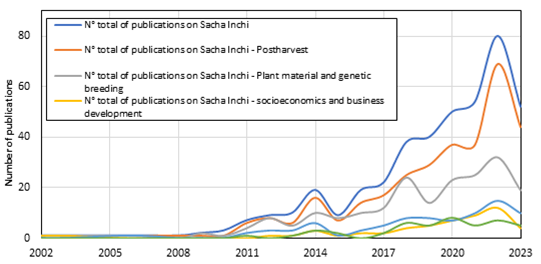
Figure 2 Dynamics of publications and growth of science in sacha inchi thematic areas research 2002-2023. Source: elaborated based on Scopus® data. Consulted in October 2023. Processing software: Excel®
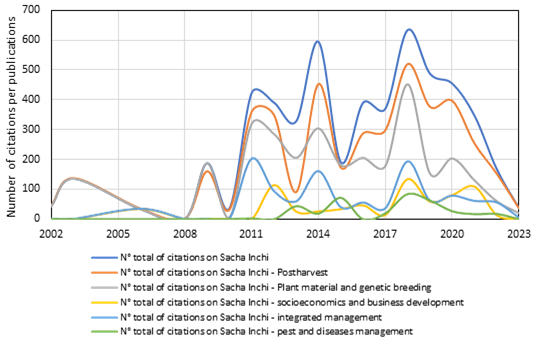
Figure 3 Citation dynamics on sacha inchi research. Source: elaborated based on Scopus® data. Consulted in October 2021. Processing software: Excel®
By implementing Lotka's Law (Mingers &Leydesdorff, 2015b), the most relevant researchers in Sacha inchi were identified, considering their number of publications and citations. Cai, Z. of Foshan University registered 15 publications, i.e., he is the most productive researcher. His study "Shade Delayed Flowering and Decreased Photosynthesis, Growth, and Yield of Sacha Inchi (Plukenetia Volubilis) Plants" (Cai, 2011) is the most relevant on Sacha Inchi plant physiology and crop nutrition. Gutiérrez, L.F, a researcher from Universidad Nacional de Colombia (UNAL) in Colombia, has 347 citations in postharvest and processing, being the most cited author (Table 2). According to the citations indicator received in the database, the most cited article with 159 citations is "Supercritical CO2 extraction of omega-3 rich oil from Sacha inchi (Plukenetia volubilis L.) seeds" (Follegatti-Romero et al., 2009).
Table 2 Leading researchers in Sacha Inchi, number of publications and citations received
| Leading researcher | Thematic area | Institutional affiliation | Country | No. of publications | No. of citations |
|---|---|---|---|---|---|
| Cai, Z | Plant physiology and nutrition | Foshan University | China | 15 | 299 |
| Du, B | Postharvest and processing | South China Agricultural University | China | 14 | 100 |
| Li, P | Postharvest and processing | South China Agricultural University | China | 14 | 100 |
| Corazon-Guivin, M.A. | Plant physiology and nutrition; soil management | Universidad Nacional De San Martín | Perú | 10 | 81 |
| Gutiérrez, L.F. | Postharvest and processing | Universidad Nacional de Colombia | Colombia | 10 | 347 |
| Chirinos, R. | Postharvest and processing | Universidad Nacional Agraria La Molina | Peru | 9 | 257 |
| Campos, D | Postharvest and processing | Universidad Nacional Agraria La Molina | Peru | 9 | 152 |
| Xu, Z. F | Planting material; Plant physiology and nutrition | Guangxi University | China | 9 | 190 |
| Chavez, F.C.M | Planting material and genetic breeding | Embrapa | Brazil | 8 | 77 |
| Pedreschi, R. | Postharvest and processing | Pontificia Universidad Católica de Valparaíso | Chile | 8 | 292 |
| Kumar, B | Processing; Biomass for nano-biotechnology products | Universidad de las Fuerzas Armadas (ESPE) | Ecuador | 6 | 325 |
Source: elaborated based on Scopus® data. Consultation date October 2023. Analysis software: Bibliometrix® and VOSviewer®
In each of the research-leading countries, various institutions that generate knowledge (number of publications) and their capacity to disseminate specialized knowledge (citations) stand out (Table 3). Peru has two leading research universities and a research center specializing in the Amazon basin (center of origin). China, with the scientific giant Chinese Academy of Science and the University of Science and Technology, has generated research lines in the use of the product and its introduction to the agroecological conditions of China. Other countries with territory in the Amazon basin, such as Ecuador, Brazil, and Colombia, have developed work on creating value chains, not only in this territory but also in areas with favorable cultivation conditions.
The interaction between research organizations, universities and private firms, allows connecting basic and applied research in favor of technological development. Specialized centers in the agricultural sector stand out, such as Instituto Nacional de In novación Agraria (INIA), Instituto de Investigaciones de la Amazonía Peruana (IIAP), the Brazilian Agricultural Research Corporation (EMBRAPA), and Consejo Nacional de Investigaciones Científicas y Técnicas (CONICET) in Argentina. Moreover, Chinese (led by the Chinese Academy of Sciences), Peruvian (led by Universidad Nacional Agraria la Molina), and Colombian universities (led by Univer sidad Nacional de Colombia). The most relevant interaction between countries includes top leaders like Peru, Colombia and Spain (green cluster), Brazil and México (blue cluster), China, United States and Thailand (Red cluster), Ecuador and India (Purple cluster) and Vietnam and Taiwan (Figure 4).
The main thematic clusters are identified by analyzing the keywords of the 418 publications selected through term co-occurrence algorithms (Cuccurullo et al., 2016) in VOSviewer. These clusters establish the diversification of research lines in Sacha Inchi. The co-occurrence network is presented in Figure 5 based on the frequencies of occurrence (number of times each research topic appears) and the intensity of co-occurrence (a measure of the interaction of two topics). The network includes 5 thematic clusters, each comprised of nodes of the same color related to a thematic area or research field, as follows.
3.2.1 Sacha Inchi as a source of essential fatty acids (Blue Cluster)
This cluster is comprised of 48 research topics, among which particular interest in the content of linoleic, oleic and linolenic acids were identified (Avila-Sosa et al., 2019;Carrillo et al., 2018). Technologies of electrospray mass spectrometry, gas chromatography and ionization, high-efficiency liquid chromatography, supercritical fluid extraction, and analysis of polyphenols, glycerols, triglycerides, diacylglycerols, triacylglycerols, and volatile compounds are integrated (Chirinos et al., 2016; Gutiérrez et al., 2017).
Table 3 Leading countries and institutions on sacha inchi research, number of publications, citations received, and collaboration index
| Country | Institution | No. of publications | No. of citations | Country Collaboration Index* |
|---|---|---|---|---|
| Peru | Universidad Nacional Agraria La Molina (18; 562)** Pontificia Universidad Católica del Perú (12; 74) Instituto de Investigaciones de la Amazonia Peruana (11; 72) Universidad Nacional de San Martín (12; 87) | 93 | 1,295 | 0.529 |
| China | Chinese Academy of Sciences (37; 700) South China Agricultural University (15; 101) Southwest Forestry University (8; 92) | 87 | 994 | 0.1 |
| Thailand | Naresuan University (13; 49) Mae Fah Luang University (12; 138) Chiang Mai University (9; 85) | 59 | 316 | 0.294 |
| Colombia | Universidad Nacional de Colombia (21; 524) Universidad ICESI (7; 70) Universidad de Antioquia (4; 111) | 47 | 650 | 0.159 |
| Brazil | Embrapa (9; 98) Universidade Federal Fluminense (UFF) (8; 168) Universidade Federal Rural de Rio de Janeiro (UFRRJ) (8; 168) | 44 | 770 | 0.07 |
| Spain | CSIC (6; 8) Pablo de Olavide University (5; 52) Universidad de Sevilla (3; 50) | 23 | 257 | 0.750 |
| Ecuador | Universidad de la Fuerzas Armadas (9; 325) Universidad Técnica de Ambato (3; 29) Universidad de Guayaquil (2; 7) | 23 | 368 | 0.375 |
| United States | University of Tennessee (4; 37) University of Houston (3; 17) Florida State University (2; 86) | 20 | 363 | 0.6 |
| Chile | Pontificia Universidad Católica de Valparaíso (7; 152) Universidad de los Andes - Chile (3; 119) Universidad de Chile (3; 119) | 13 | 314 | 0 |
| Argentina | CONICET (4; 39) Instituto Nacional de Tecnología Industrial (INTI) (3; 17) INTA (3; 14) | 11 | 67 | 0.5 |
Source: elaborated based on Scopus® data. Consultation date October 2023. Analysis software: Bibliometrix® and VOSviewer®
* This index is calculated for each country considering the ratio of documents in which there is at least one co-author from a different country (Aria & Cuccurullo, 2017).
** The numbers in brackets correspond to (number of publications; number of citations).
A topic of recent interest is the content and bioavailability of tocopherols (Chirinos et al., 2016; Ramos-Escudero et al., 2021). Recent approaches on fatty acid profile determination of sacha inchi seeds comprises their uses as a functional additive in sauces (Wongpattananukul et al., 2022), and the chemical composition on roasted seeds focused on antioxidation activity stability (Bocanegra Morales & Galeano Garcia, 2023).
3.2.2 Antioxidant properties and nutritional value (Red Cluster)
Sacha Inchi, as an oleaginous dried fruit or as oil for direct consumption, has been of interest in the study of its nutritional chemical composition and bioavailability (Jang et al., 2020; Kim & Joo, 2019). The work topics include the analysis of phenolic compounds, antioxidant compounds, and carotenoids because of their potential use in products such as nano active compounds, biofuels, nutraceuticals, pharmaceuticals, and cosmetics (Nascimento et al., 2013). The variability of the nutritional content is associated with factors that affect the development cycle of the fruit and the efficiency in processing and postharvest (Suwanangul et al., 2021). Furthermore, recent advances promote determining antioxidant and immunological properties of sacha inchi based dietary fiber (Zhao et al., 2022); enhancing antioxidant activities of sacha inchi oil blending it with other plant extracts (microencapsulation) (Chasquibol et al., 2023); and sacha inchi husks antioxidants screening (byproducts with added value) (Thuanthong et al., 2023).
3.2.3 Benefits of consuming Sacha Inchi (Green Cluster)
This cluster includes topics related to nutritional value and the positive effects of Sacha Inchi consumption (Alayón et al., 2019). Some of the topics that stand out are the accumulation of lipids, metabolic and antioxidant responses, vegetable protein content (Hanssen & Schmitz-Hübsch, 2011; Jiapong & Ruttarattanamongkol, 2021), ancestral knowledge of its botanical uses, regulation of blood cholesterol, regulation of insulin levels (Perona et al., 2018), an ingredient in dietary supplements, protein alternative for food safety and health benefits(Vanegas-Azuero & Gutiérrez, 2018). Instead of seeds and oil, sacha inchi by-products (husks, leaves and stems), can be used as sources of health benefits (Kittibunchakul et al., 2022).
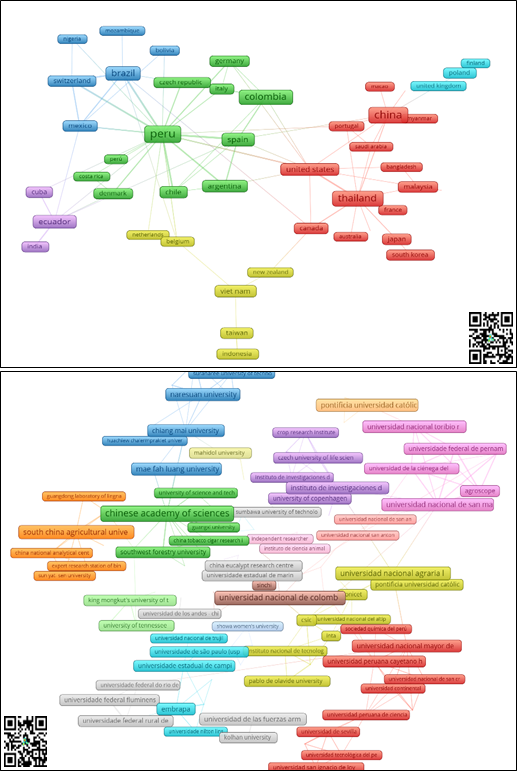
Figure 4 Countries and institutions collaboration networks for sacha inchi research. Source: elaborated based on Scopus® data. Consultation date October 2023. Analysis software: Bibliometrix® and VOSviewer®.
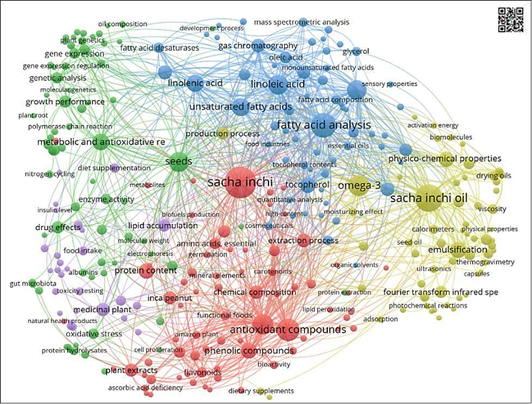
Figure 5 Co-occurrence network of keywords that conforms research thematic clusters. Source: elaborated by based on Scopus® data. Consultation date October 2023. Analysis software: VOSviewer®.
Sacha inchi oil is considered for clinical and cosmetical skin treatments (Poljšak & Kočevar Glavač, 2022); as a main ingredient for functional foods like yogurt and elder-friendly drinks (Kim et al., 2023; Villamil et al., 2023) with high protein and essential amino acids content. Finally, sacha inchi oil and extracts have been used as an input for nutritional supplementation on tilapia productive chains (Simawan et al., 2023) and broiler farms (Alcivar-Cobena et al., 2023).
3.2.3 Benefits of consuming Sacha Inchi (Green Cluster)
This cluster includes topics related to nutritional value and the positive effects of Sacha Inchi consumption (Alayón et al., 2019). Some of the topics that stand out are the accumulation of lipids, metabolic and antioxidant responses, vegetable protein content (Hanssen & Schmitz-Hübsch, 2011; Jiapong & Ruttarattanamongkol, 2021), ancestral knowledge of its botanical uses, regulation of blood cholesterol, regulation of insulin levels (Perona et al., 2018), an ingredient in dietary supplements, protein alternative for food safety and health benefits (Vanegas-Azuero & Gutiérrez, 2018). Instead of seeds and oil, sacha inchi by-products (husks, leaves and stems), can be used as sources of health benefits (Kittibunchakul et al., 2022). Furthermore, sacha inchi oil is considered for clinical and cosmetical skin treatments (Poljšak & Kočevar Glavač, 2022); as a main ingredient for functional foods like yogurt and elder-friendly drinks (Kim et al., 2023; Villamil et al., 2023) with high protein and essential amino acids content. Finally, sacha inchi oil and extracts have been used as an input for nutritional supplementation on tilapia productive chains (Simawan et al., 2023) and broiler farms (Alcivar-Cobena et al., 2023).
3.2.4 Sacha Inchi oil, added value of the benefit (Yellow Cluster)
Sacha Inchi oil for direct consumption and as an active ingredient for the design of omega 3, 6, and 9 essential fatty acid supplements (Bondioli et al., 2020; da Silva Soares et al., 2021). This entails focusing on unsaturated fatty acids in oil extraction and analysis and conservation of their physicochemical properties, especially regarding their stability against oxidation under storage (Kumar et al., 2014; Niu et al., 2014). Oil analysis technologies, such as thermogravimetry, nuclear magnetic resonance, Fourier-transform infrared spectrometry, and calorimetry, are identified (Vicente et al., 2018). Similarly, packaging and storage technologies focused on the bioavailability of fatty acids, such as spray drying equipment, oil microencapsulation, integration of surfactant compounds, and biopolymers to form nanoemulsions (Silva et al., 2019; Tunkam & Satirapipathkul, 2016). Other advances in sacha inchi uses for added value products, is the use of leaves extracts for gold nanoparticles (Kumar et al., 2022); the determination of oil authenticity through NIR spectrometer with data driven approach (Tirado et al., 2023); and functional foods formulation using microencapsulated dried Sacha inchi (Rodríguez-Cortina & Hernández-Carrión, 2023).
3.2.5 Integrated crop management (Violet Cluster)
It includes most of the research topics required to design specific production models (Valente et al., 2017). The most outstanding practices are agroforestry systems, vegetative propagation (Cachique et al., 2018), phylogenetic relationships (Ocelák et al., 2015), seedling growth (Rodrigues et al., 2014; Tian et al., 2013), floral development (Fu et al., 2018a), and the use of growth promoters (Pezo et al., 2019). In addition, the genetic analysis of seeds and seedlings through transcriptomic sequencing (Liu et al., 2020), genomic profiles (Valente et al., 2017), Ribonucleic Acid (RNA) extraction, and high-efficiency sequencing stands out (Villanueva-Corrales et al., 2021). Regarding soil management sacha inchi crops establishing promotes Arbuscular Mycorrhizal Communities improvement (de la Sota Ricaldi et al., 2023); soil water availability and light intensity modifies photosynthetic response (growth rate) (Vitar et al., 2023); and combined used of NPK fertilizers and biochar (Suraya et al., 2023).
The co-occurrence network analyzed through the evolution of the topics of interest as a function of time shows the border topics in red (Figure 6) representing the combination of the progress in basic research and its contribution to technological development.
The key issues in 2022 include the valorization of Sacha Inchi oil through extraction technologies (focused on preserving physicochemical characteristics), stabilization (integration with adjuvant compounds to generate emulsions), and packaging (micro- and nano-encapsulation with biopolymers).
3.3 Phase 3. Selection and analysis of key publications
In a complementary manner, the research topics were categorized with respect to the centrality variables (importance of the topic in the field of research) and density (a measure of the degree of development of the topic) in four key quadrants (Cobo et al., 2012) as presented in Figure 7. The four quadrants analysis is presented below.
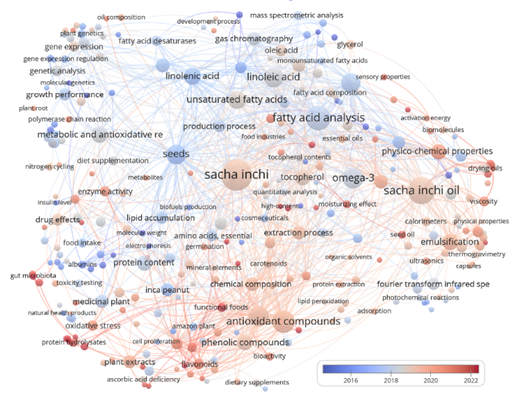
Figure 6 Temporary distribution network of thematic areas or research fields in sacha inchi. Source: Elaborated based on Scopus® data. Consultation date October 2023. Analysis software: VOSviewer®.
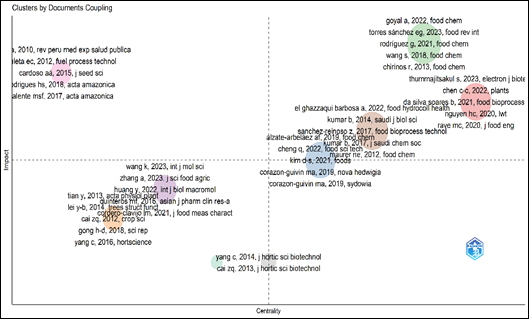

Figure 7 Thematic categorization map and bibliographic coupling for sacha inchi research topics. Source: Scopus® data. Consultation date June 2021. Analysis software: Bibliometrix®.
3.3.1 Motor or driving topics or 'Mainstream' (Upper Right Quadrant)
These topics encompass the current research front and are characterized by high centrality and density. The analysis of the fatty acid profiles of Sacha Inchi oil, the assessment of the kinetics and rheology of the oil, and the content of compounds of interest such as tocopherols, polyphenols, antioxidants, and flavonoids stand out. Furthermore, research on oil nanoemulsions and oil micro-encapsulation is emerging.
3.3.2 Basic or transversal topics or 'Base Current' (Lower Right Quadrant)
In this quadrant, topics have a high degree of development and medium importance in the research field. The diversification of topics ranges from the analysis of the fractions of essential fatty acids, with particular attention to linoleic and linolenic acids, to the study of the antioxidant capacity of the nut and the oil, passing through the floral development analysis of the plant, its physiology and soil management, microencapsulation, emulsification and spray drying techniques, among others.
3.3.3 Specialized topics or "Niches or Ivory Towers" (Upper Left Quadrant)
Specialized topics are considered highly developed; however, their relative importance in the entire field of research is low or moderate. Research in farming systems, agroforestry systems, promotion of plant growth, and vegetative development stands out. Consequently, topics related to functional foods design, health and cosmetic uses comprise a specialized research niche.
3.3.4 Emerging or declining topics (Lower Left Quadrant)
Emerging or declining topics contribute to identifying changes in the topics of the other three quadrants, as well as the appearance of new ones or those that have not generated a significant degree of development. The use of advanced technologies such as Fourier-transform infrared spectroscopy and chemometrics to determine the content and bioavailability of antioxidants stands out as an emerging topic. Furthermore, using spectroscopy techniques contributed to guarantee authenticity of sacha inchi soil as well origin denomination controversies.
The thematic map contrasted with a bibliographic coupling analysis [78] allows identifying in these quadrants the key documents for analysis in search of elements and best practices that contribute to designing a productive model for Sacha Inchi. Table 4 shows the key documents selected through scientometric indicators and the criteria of technical experts per research team.
3.4 Phase 4. Approach to best practices
The documents in Table 4 were retrieved in full text and analyzed considering variables such as geographic area, social environment, basic information about the species, nutritional value, technical recommendations for management, commercialization, and marketing (Consult Table 1 in the Supplementary material, this table identifies key elements that can be considered a baseline for designing a production model for Sacha Inchi).
According to the analysis of the information conducted, it is identified that the scientific advances in the Sacha Inchi production system, both in its cultivation and harvest stages, as well as in postharvest and processing, have been driven by the nutritional characteristics of the nut, the shell, and its primary extract, the oil. These lines of research are consistent with current trends in functional foods related to the utilization of bioactive compounds, such as polyphenols, flavonoids, and anthocyanins, and in other uses, such as cosmetics, pharmaceuticals, and in the pharmacological industry (Farias et al., 2019; Morris & Li Wang, 2018).
These characteristics become the added value and differential point for the promotion of Sacha Inchi, which has been observed not only in the center of origin in the Amazon basin but also in south-eastern Asian countries (Hu et al., 2018; Liu et al., 2020; Wang et al., 2018), where its potential as food (oil and nut) and biofuel (shell and by-products), has generated the study of its production cycle, plot establishment, vegetative development, the incidence of pests and diseases and harvest and postharvest activities in protected agricultural units and botanical gardens.
In the case of Colombia, which shares a center of origin with Peru, Ecuador, and Brazil, the country will be able to promote the use of the crop not only in the departments of the Amazon region but also in agroecological zones with edaphological, climatic and agroecological suitability potential in the Andean and Orinoquía regions. For this, the analysis in the scientific literature allowed the identification of methodological elements and conclusions related to the study variables from the selection of specific articles combining scientometric criteria and criteria from the authors, as follows:
3.4.1 Geographic area and environment
The analyzed articles contemplate the main variables of the edaphoclimatic conditions required by the crop according to its productive cycle and how these affect the physicochemical and organoleptic characteristics of the seed. The most suitable altitude for the crop is between 100 and 2,000 meters above sea level, at temperatures between 10 and 26 °C and relative humidity of 78%. The most used soils are clayey, pH between 5.5 and 7.5, and adequate drainage (Alayón & Echeverri, 2016; Flores & Lock, 2012; Yang et al., 2016) . Thus, the Orinoquía region located at 500 meters above sea level, with average temperatures above 27 °C, sandy soils in the windy plains and clayey soils in the highlands, with a relative humidity between 60%-80%, has the potential to develop a Sacha inchi productive model, added to the fact that departments such as Meta, Casanare, Guaviare, and Vichada, together with the department of Putumayo, cover about 700 ha, with an estimated production of approximately 1,500 t.
3.4.2 Technical recommendations for management
The influence of plant hormones on the growth and development of Sacha inchi, especially naphthalene acetic acid and cytokinin, has been documented. Besides contributing to root growth, the former has shown an essential role in seed germination and the development of taller seedlings. The latter influences the differentiation and development of female flowers, and therefore, fruit yield increases. However, their mechanism of action in this process is unknown (Fu et al., 2014; Fu et al., 2018a; Lei et al., 2014; Luna & Bustamante, 2011). The sexual differentiation of flowers in Sacha inchi is influenced by some genes identified in the transcriptome, which also participate in the regulation of phytohormones and protein storage (Fu et al., 2018a).
Sacha inchi yield decreases considerably when the plants are exposed to low temperatures and drastic changes in humidity, physiologically affecting the photosynthetic process (Lei et al., 2014). Similarly, water deficit affects yield, for which full irrigation regimes are recommended even at the expense of efficient water use to improve seed and oil yield (Gong et al., 2018).This management is also affected by the sowing density, where a population of 4,444 plants per ha is optimal to guarantee the maximum yield of seeds and oil, regardless of the quantity of fertilizers applied (Yang et al., 2014).
The phylogenetic studies identified the genus Plukenetia as pantropical, with a center of origin in the Amazon. Currently, the species traditionally cultivated in the tropical Andes for medical and nutritional purposes are P. volubilis (Sacha Inchi or Inca Peanut), P. carolis-vegae, and P. huayllabambana. The variability found in the species has been related, among others, to anthropological processes such as migration and seed commercialization.
Regarding the management of the genetic resource of Sacha Inchi, it is worth highlighting the relevance of the studies developed for the identification of the relationship among genetic, phenotypic, and productive parameters and those of clonal and in vitro material production, which seeks to take advantage of the genetic variability of the species to generate conservation and crossbreeding processes. This allows capitalizing on the positive correlations between the evaluated variables, in terms of yield and quality in oil production (the content of unsaturated fatty acids).
Regarding plant multiplication processes, research has been conducted aimed at evaluating the effects of factors such as temperature, relative humidity, and substrate in the seed germination process, as well as diverse types of grafting, graft protection methods, and production of in vitro material and from cuttings, based on protocols developed for this purpose.
Sacha inchi plants must maintain adequate water availability in critical times such as flowering and fruiting. Therefore, it is necessary to apply water through irrigation in dry periods. In general, the studies recommend the complete application of irrigation to satisfy the total evapotranspiration of the Sacha Inchi plants, facilitating the use of nutrients and helping the faster growth of the seedlings. Regarding water deficit, when it is moderate, P. volubilis plants were identified to recover fast when receiving water; in cases of prolonged deficit, its growth is limited, favoring early fruit ripening and even natural abortion, reducing seed yield. On the other hand, it is necessary to have well-drained soils to avoid excess water in the plant and favor the appearance of pests and diseases.
According to studies, the application of vesicular-arbuscular mycorrhizae favors the increase in the emission of flowers in P. volubilis plants. The growth of Sacha Inchi seedlings and tolerance to drought improves significantly with the colonization of arbuscular mycorrhizal fungi. Likewise, doubly inoculated plants have a more significant development under good irrigation conditions, higher specific leaf area, a proportion of the leaf area and root volume significantly higher compared to the control treatments without inoculation, all related to greater stimulation of the photosynthetic rate and water use efficiency.
It is crucial to consider the previous land uses where the cultivation of sacha inchi is to be established since, depending on the predecessor crops, it can have a significant impact on the microbial community of the soil, which, in turn, affects soil fertility characteristics. Likewise, it is advisable to maintain soil covers with Canavalia and Centrosema, which help control weeds, limit erosion, maintain soil moisture, and improve fertility, favoring plant root development, yield, and nitrogen fixation.
A wide diversity of insects is associated with the cultivation of Sacha Inchi. However, their roles in crop development have not yet been fully identified. At the economic impact level, the importance of the characterization and management of root-knot nematodes, such as Meloidogyne incognita, is recognized due to their negative implications on crop productivity and survival (Gonzales et al., 2015).
The literature reports identified two diseases that cause wilt in Sacha Inchi, Fusarium solani and Ralstonia solanacearum. The fungus causing stem rot was also identified as Macrophima phaseolina, which can potentially cause losses of over 50% in production due to plant loss. Although frontier technologies include the design of emulsions in which nanotechnology contributes to variables such as color, viscosity, oxidation tolerance, and rheological properties, composition traceability technologies such as nuclear magnetic resonance, thermogravimetry, and infrared spectroscopy remain relevant.
The main aspects to consider for a production model include the analysis of the content of essential fatty acids (saturated, unsaturated and polyunsaturated) in the nut and the postharvest shell and the oil as a transformed product. These contents vary depending on the cultivation areas, the agronomic management, and aspects related to plant physiology.
Finally, the management of the supply chain to transport and store harvested and processed products led to the design of collection centers, the adoption of conservation mechanisms and quality analysis (in situ and ex situ), the incorporation of real-time traceability technologies of organoleptic traits (wireless remote sensors), and analysis technologies of organoleptic traits (sensory analysis).
3.4.3 Commercialization and Marketing
The aspects related to the commercialization and marketing of products derived from sacha inchi depend on their organoleptic characteristics, nutritional content, composition based on bioactive compounds, denomination of origin, and traceability of the supply chain. The content of linoleic and linolenic acids is the key to guaranteeing success in inserting products derived from this species into a potential market (Quizhpe Salinas & Villalba Cando, 2014).
4. Conclusions and outlook
The results obtained in the research process contribute to the analysis of the current state and perspectives for the consolidation of the productive system of Sacha Inchi in Colombia. Each thematic area assessed identified regional and international references (researchers, institutions and countries) leaders in the development of knowledge and technologies for the system. Likewise, structuring the thematic axes and the work topics contributes to establishing the work niches, the points of potential exploration, the base nuclei, and the possible frontiers of knowledge.
Basic investigations will allow having references as a contribution to the development of productive models of Sacha Inchi in Colombia, where different technical aspects must be adapted or validated in suitable agroecological areas or with productive potential to improve seed yield and quality for agro-industrial use. In the same way, it is necessary to deepen the analysis of times, frequency, and conditions to conduct the diverse types of pruning in the crop to improve its productivity.
Based on the methodologies used and the results obtained, the need for future research in the medium term is identified, referring to validate an adjust of technologies managing the genetic resource and multiplying plant material, with the agroclimatic conditions of the productive areas identified in Colombia and the most used materials by producers. Furthermore, identify genetically the planting material with known and differentiated management and productivity characteristics, facilitate the selection of materials oriented to the production of fruits with the required quality by the agribusiness to produce products such as oils, snacks or flour, among others. Eventually, this will strengthen and maintain the relationship between the producer, the agribusiness, and the market.
It is necessary to expand the study of insects associated with the cultivation of Sacha Inchi and their functions as part of the biodiversity conservation process and its ecosystem services. In the case of pest insects, such as M. incognita, it is necessary to know their behavior in the productive areas of the country and define structured actions for their control (Integrated Pest Management), which include, among others, the identification of resistant or tolerant materials, selection of bio controllers and production of bio inputs.
Based on the results obtained from this research and the perspectives of this productive system in Colombia, opportunities are identified to develop research that evaluates and validates the different practices used in reference countries, under the agroecosystemic conditions of the productive areas in Colombia, to determine optimal agronomic, harvest and post-harvest management conditions and promote productivity, sustainable production and competitiveness of Sacha Inchi products and by-products with prospects for international markets.
Finally, the design and implementation of a produc tive model for Sacha Inchi crops in Colombia requires a permanent monitoring of the scientific, commercial and technological trends, related to the key strategic areas discussed in this paper. The mapping of new insights reported in scientific literature related to crop management, phytosanitary management, soil and water management, breeding and genetic enhancement, post harvesting and added value activities, associated with similar agroecological conditions, could provide with valuable data and information for strengthening the Colombian productive model.














